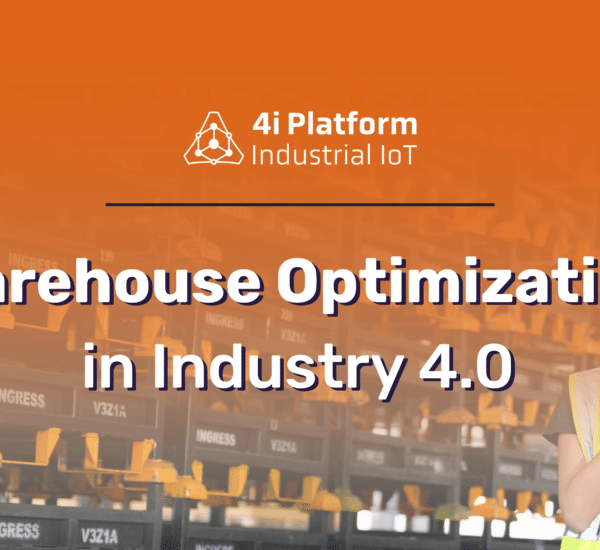What is Smart Manufacturing?
Smart manufacturing refers to the use of IoT technology and automation in manufacturing operations to improve production optimization. Indoor Intelligence is an important tool to unlock all the benefits of transforming manufacturing and warehouse facilities into smart spaces. It enables different benefits, for example:
- Accurately track assets.
- Improve worker safety
- Increase productivity
- Secure your production floor.
Above all, manufacturing has experienced a digital revolution over the past decade. There are many new industrial applications, for instance, artificial intelligence, cloud computing, and IoT connectivity.
These include predictive analytics, quantum computing, and innovative additive fabrication technologies, like 3D printing. These technologies have ushered in a fourth industrial revolution.
What is a Smart Factory using IOT?
A smart factory is a digitally connected shop floor that constantly collects and shares data with other machines, devices, and production systems. As a result, this factory combines physical production and operations with digital technology, smart computing, and big data to provide a more profitable system for companies that focus on supply chain and manufacturing.
IoT evolution focuses on:
- Real-time manufacturing data
- Logistics data
- Embedded sensors
- Connectivity
- Machine learning
- Automation.
Businesses must rethink how automation strategies and workforce development are handled as factories change in the light of the data revolution. In other words, manufacturers will require modernized tools, including flexible, robust enterprise resource planning systems that can be used as a transactional and data backbone. This will allow them to adapt quickly and build a smart factory.
Smart factories can connect the digital and physical worlds to monitor and improve the production process, for example:
- Manufacturing tools
- Supply chain
- Individual shopfloor operators.
IoT Evolution – Sensors
Manufacturing is changing rapidly. Companies can not reduce Industry 4.0 to a single technology or a group of technologies, so, it is fundamentally a reconfiguration of work in the digital age.
IoT evolution, according to some, is the convergence of multiple technologies into responsive technological ecosystems. Industry 4.0 technologies are a crucial change in the industry because they enhance, enable and augment one another as systems.
Indoor positioning can be used to make indoor spaces easily discoverable. For instance, this can be done with Inpixon’s award-winning sensor technology, or by using your existing technology ecosystem. Indoor positioning systems (IPS), which use, for example, smartphones, mobile devices, and tracking tags to pinpoint the exact location of assets or people within a building, allow users to precisely locate them.
IPS technology uses a variety of sensors, so, it can detect and track the location of a device. This is possible thanks to internal sensors, radio receivers on smartphones, and other IoT wearable devices or radio frequency sensors in indoor areas.
The positioning system ingests the location data and generates precise coordinates that are displayed on indoor mapping. This allows for unparalleled visibility of complex manufacturing facilities as well as the transmitting environment within them.
Production optimization: The Importance Of Location Awareness
However, situational awareness requires location awareness. Indoor Intelligence Platform by Inpixon ingests data from IoT and third-party sensors. Consequently, this platform can detect and position active Wi-Fi, Bluetooth, and cellular devices. This multidisciplinary view of indoor data allows users to increase revenue, decrease cost, and improve safety.
Innovative technologies and location awareness open up new avenues for time-saving and cost-reducing opportunities.
Companies can use drones to track assets, so robots can navigate autonomously through warehouses. You can create a system that combines digitized maps of the indoor environment with wayfinding and asset tracking. Therefore, this will allow you to maximize recursive learning and an AI model to improve production optimization.
Drones that move quickly through a facility without colliding with each other could be an example.
Smart factories and warehouses offer many benefits, such as:
- Safety of employees
- Less digital distractions
- Asset tracking
- Emergency preparedness
- Automated operations and operational efficiency
- Environmental monitoring (temperature, moisture, etc.)
- Predictive analytics available
- Plus!
All these benefits make smart technology a wise investment for organizations looking to improve their manufacturing processes.
Companies can offer employees location-aware solutions, so it is possible to improve operational efficiency and productivity as internet-enabled objects become increasingly ubiquitous and integrated with location-based services.
There are many opportunities in the manufacturing and warehouse sector for machine learning and indoor mapping applications. When organizations adopt industrial IoT technologies for production optimization, they can unlock new worlds of potential with the right foundational elements.
If you want to learn more about Technology 4.0, contact us!





